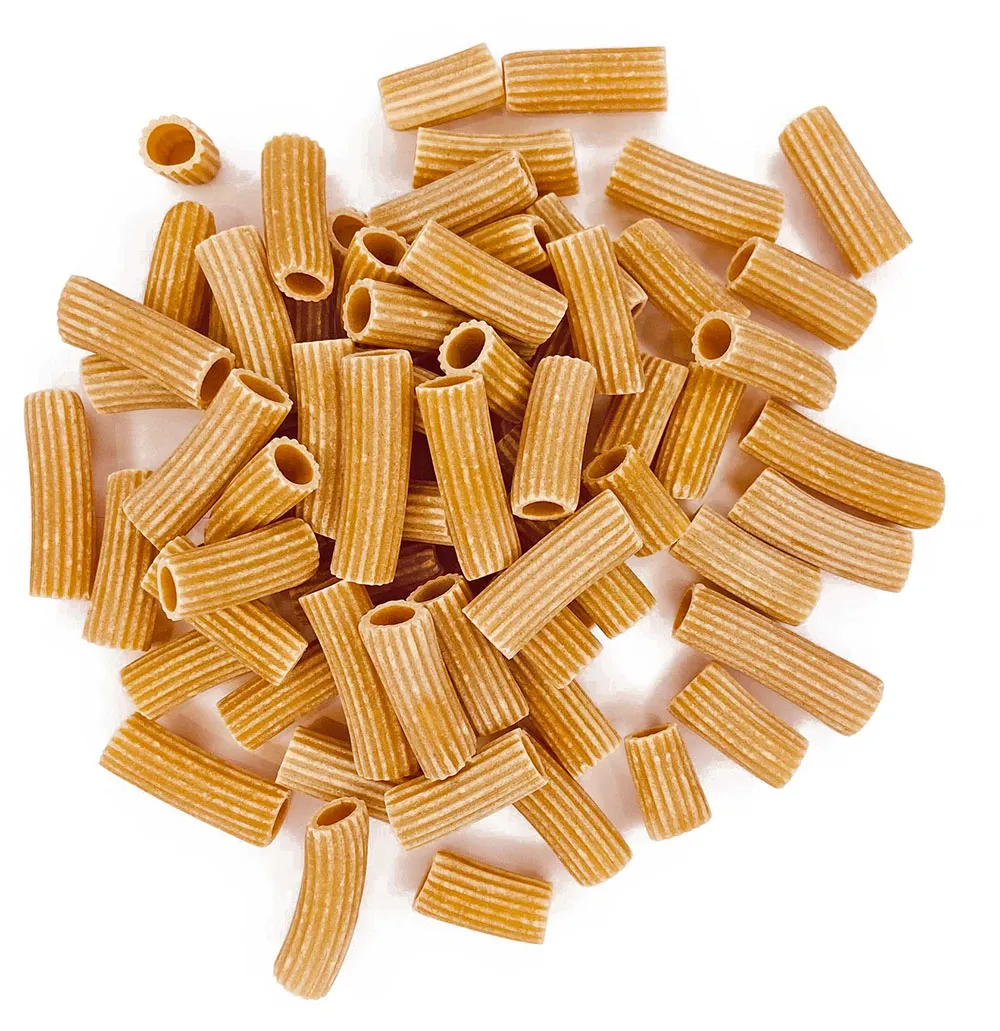
| Glycemic Index | Glycemic Load |
40
|
10.6
|
The glycemic index (GI) of whole wheat pasta equals to 40, which classifies it as a low GI food. The glycemic load (GL) of whole wheat pasta is equal to 10.6, which classifies it as a moderate GL food.
| Nutrition Facts | |
| Calories (kcal) | 124 |
| Carbohydrates (g) | 26.5 |
| Proteins (g) | 5.3 |
| Fats (g) | 0.5 |
100 grams of whole wheat pasta contain 124 kcal (519 kJ), 5.3 grams of proteins, 26.5 grams of carbohydrates, and 0.5 grams of fats.
Whole wheat pasta is a type of pasta made from whole grain wheat flour, which is milled to include the bran, germ, and endosperm. This results in a product that is higher in fiber and other nutrients than traditional white pasta. In this article, we will discuss the nutritional benefits, drawbacks, nutrition facts, and health benefits of whole wheat pasta.
Nutrition Facts:
Whole wheat pasta is a good source of fiber, protein, and other important nutrients. One serving of whole wheat pasta, which is approximately 2 ounces, contains approximately 200 calories, 11 grams of protein, 1 gram of fat, and 53 grams of carbohydrates. It is also rich in vitamins and minerals such as folate, magnesium, and iron.
Health Benefits:
- High in Fiber: Whole wheat pasta is higher in fiber than traditional white pasta. Fiber helps to regulate digestion and can also help to lower cholesterol levels.
- Supports Weight Management: Whole wheat pasta is lower in calories and higher in fiber than traditional white pasta, which can help to promote feelings of fullness and lead to a reduced overall calorie intake. This can aid in weight management.
- Reduces Risk of Chronic Diseases: Whole wheat pasta is rich in nutrients such as folate, magnesium, and iron, which are associated with a reduced risk of chronic diseases such as heart disease, stroke, and certain cancers.
- Lowers Blood Sugar: Whole wheat pasta has a lower glycemic index than traditional white pasta, which means it causes a slower and more gradual increase in blood sugar levels after consumption. This can be beneficial for individuals with diabetes or those at risk for developing diabetes.
- Improves Digestion: The high fiber content in whole wheat pasta can help to promote regular bowel movements and improve digestion.
Drawbacks:
- Can be Tougher in Texture: Some people may find whole wheat pasta to be tougher and chewier in texture than traditional white pasta.
- May Not be Suitable for Gluten-Free Diets: Whole wheat pasta contains gluten, which can be harmful to individuals with celiac disease or gluten intolerance.
- Higher in Calories Than Some Other Carbohydrates: Whole wheat pasta is still a carbohydrate-rich food and can be higher in calories than some other carbohydrate sources.
In conclusion, whole wheat pasta is a nutritious and healthy alternative to traditional white pasta. It is high in fiber, protein, and important nutrients, and can aid in weight management, reduce the risk of chronic diseases, and improve digestion. However, it may not be suitable for gluten-free diets and can be higher in calories than some other carbohydrate sources. Overall, incorporating whole wheat pasta into a balanced and varied diet can be a healthy and delicious choice.


